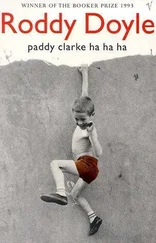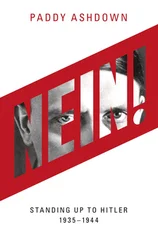The meeting which followed with the French ambassador was short and perfunctory, ending at 6.15 p.m. As soon as the French emissary was safely out of the building, Hitler promptly rescinded the order he had given only four hours earlier to launch the attack on Poland.
What Hitler did not know, any more than he knew that his last-minute hesitation on Czechoslovakia a year previously had saved his life, was that history had almost precisely repeated itself.
A few days earlier, Hans Oster had instructed Friedrich Heinz, the man in charge of the commando raiding party in the September 1938 coup attempt, to be ready to carry out the same operation to capture and kill the Führer at very short notice. Over the following days, all the ‘lovely plans’ which had been burnt in General von Witzleben’s fireplace on the evening of Munich were painstakingly reconstructed. The intention was to launch a coup at the moment Hitler gave the order to attack Poland.
As Hitler was seeing his succession of ambassadors on the afternoon of 25 August, Hans Bernd Gisevius, accompanied by Georg Thomas, the general in charge of German army logistics and armaments, and Reichsbank president Hjalmar Schacht, were on their way to pick up Canaris from the Tirpitzufer. Their intention was to drive to army headquarters at Zossen, thirty kilometres south of Berlin. There they would confront army commander-in-chief Walther von Brauchitsch and Ludwig Beck’s successor as chief of staff, Franz Halder, and demand that they choose between joining them in arresting Hitler that afternoon, or being exposed as members of the coup that had sought to remove him in September the previous year. Arriving at the Tirpitzufer, the three plotters were met by Oster, who, ‘shaking his head’ and ‘laughing heartily’, told them that Hitler had once again changed plan, and the coup was off. Gisevius wanted to continue with the putsch anyway, but none of the others would join him. There was jubilation. All present thought war had been conclusively avoided.
They ought to have known better.
Over the next three days, Hitler’s will returned. The first inkling of this was uncovered by Max Waibel, a Swiss intelligence officer with very good high-level contacts in Berlin (probably Oster), who signalled his headquarters on the afternoon of 27 August, reporting that the new launch date for Hitler’s attack on Poland was to be 1 September. Given the close relations between Swiss intelligence and MI6 at the time, it seems certain that this message reached London and Paris either that day, or the one following.
Finally, on 31 August, after some further diplomatic shadow-boxing designed to conceal his intentions, the Führer again gave the order to launch the attack on Poland at dawn the following day.
A few minutes after eight o’clock that evening, a small group of German SS troops dressed in Polish uniforms ‘seized’ the German wireless station at Gleiwitz, close to the Polish frontier, broadcasting some violently anti-German messages before withdrawing and leaving behind several of their dead. In fact the ‘dead Polish attackers’ were pro-Polish German Silesians captured the previous day. Along with several prisoners from Dachau, the captured men had been first dressed in Polish uniforms, then killed with lethal injections, and finally shot and disfigured to prevent identification. Their corpses were left scattered around Gleiwitz as ‘Polish casualties’ of the ‘attack’.
At dawn the following morning, on the pretence of retaliating for the previous night’s provocations, Hitler launched five Panzer divisions in a massive two-pronged attack supported by aircraft and tanks. Their orders were to wipe Poland off the map. Two days later, the world was at war.
Bumping into Hans Bernd Gisevius in a Tirpitzufer corridor on the day war was declared, Wilhelm Canaris growled, ‘ Finis Germaniae ’ – thus ends Germany.
*The others were Fabian von Schlabrendorff, Theo and Erich Kordt, and Lieutenant Colonel Count Gerhard von Schwerin, who was sent by the German general staff.
†The building is still there, at Noordeinde 148. It is now a restaurant called ‘Het Heden’ (The Future). During the war it was owned by a Mrs Jansen, who also operated another accommodation address for Thümmel at her home. Thanks to Mike Van der Heijden for his help in finding this address and the history attached to it. See Het Koninkrijk der Nederlanden in de Tweede Wereldoorlog – Deel 2 – Neutraal .
Конец ознакомительного фрагмента.
Текст предоставлен ООО «ЛитРес».
Прочитайте эту книгу целиком, купив полную легальную версию на ЛитРес.
Безопасно оплатить книгу можно банковской картой Visa, MasterCard, Maestro, со счета мобильного телефона, с платежного терминала, в салоне МТС или Связной, через PayPal, WebMoney, Яндекс.Деньги, QIWI Кошелек, бонусными картами или другим удобным Вам способом.












